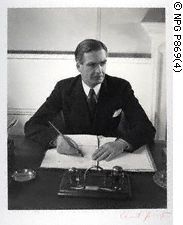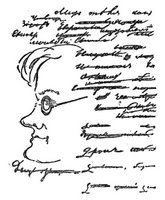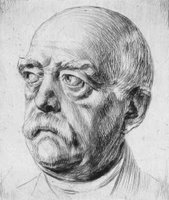"The 1953 coup in which the Central Intelligence Agency (CIA) overthrew the highly popular government of Muhammad Mossadeq and thus laid the groundwork for the establishment of the autocratic rule of Muhammed Reza Shah Pahlavi. The 1953 coup, in turn is rooted in the 1951-1953 oil crisis between Iran and Britain....The crisis did not end until August 1953, when the CIA together with the British Secret Intelligence Service (SIS), better known as MI6 organized a group of tank officers to overthrow Mossadeq".
Ervand Abrahamian.
The Coup: 1953, The CIA, and the Roots of Modern U.S.- Iranian Relations. (2013), pp. 1-2.
"Back in 2009, during his heavily promoted Cairo speech on American relations with the Muslim world, U.S. President Barack Obama noted, in passing, that “in the middle of the Cold War, the United States played a role in the overthrow of a democratically elected Iranian government.” Obama was referring to the 1953 coup that toppled Iranian Prime Minister Mohammad Mosaddeq and consolidated the rule of the shah, Mohammad Reza Pahlavi. Obama would go on to remind his audience that Iran had also committed its share of misdeeds against Americans. But he clearly intended his allusion to Washington’s role in the coup as a concession -- a public acknowledgment that the United States shared some of the blame for its long-simmering conflict with the Islamic Republic.
Yet there was a supreme irony to Obama’s concession. The history of the U.S. role in Iran’s 1953 coup may be “well known,” as the president declared in his speech, but it is not well founded. On the contrary, it rests heavily on two related myths: that machinations by the CIA were the most important factor in Mosaddeq’s downfall and that Iran’s brief democratic interlude was spoiled primarily by American and British meddling. For decades, historians, journalists, and pundits have promoted these myths, injecting them not just into the political discourse but also into popular culture: most recently, Argo, a Hollywood thriller that won the 2013 Academy Award for Best Picture, suggested that Iran’s 1979 Islamic Revolution was a belated response to an injustice perpetrated by the United States a quarter century earlier. That version of events has also been promoted by Iran’s theocratic leaders, who have exploited it to stoke anti-Americanism and to obscure the fact that the clergy itself played a major role in toppling Mosaddeq.
In reality, the CIA’s impact on the events of 1953 was ultimately insignificant. Regardless of anything the United States did or did not do, Mosaddeq was bound to fall and the shah was bound to retain his throne and expand his power. Yet the narrative of American culpability has become so entrenched that it now shapes how many Americans understand the history of U.S.-Iranian relations and influences how American leaders think about Iran. In reaching out to the Islamic Republic, the United States has cast itself as a sinner expiating its previous transgressions. This has allowed the Iranian theocracy, which has abused history in a thousand ways, to claim the moral high ground, giving it an unearned advantage over Washington and the West, even in situations that have nothing to do with 1953 and in which Iran’s behavior is the sole cause of the conflict, such as the negotiations over the Iranian nuclear program.".
Ray Takeyh, "What Really Happened in Iran [Persia]: The CIA, the Ouster of Mosaddeq, and the Restoration of the Shah."
Foreign Affairs. (July / August 2014), in
www.foreignaffairs.com.
Professor Takeyh piece in the current issue of the American periodical
Foreign Affairs is a wonderful exposition of the recent scholarship of the last fifteen to twenty years as it relates to the reality of what occurred and did not occur in Persia circa 1952-1953. While of course there was active, indeed highly active Anglo-American 'plotting' to overthrow the
demagogic Persian Prime Minister Mossadeq, that mere fact does not obviate the actual character of what did indeed occur and how it occurred. As Professor Takeyh outlines quite cogently in his piece, Mossadeq while initially quite popular circa 1951, was gradually but consistently alienating more and more sections of Persian society with his political antics and anti-monarchical policies. So much so, that by 1953, the previously highly supportive Ayatollah Kashani (who in many ways was a forerunner of Ayatollah Khomeini), had become an out and out opponent of Mossadeq and his National Front political organization.
As the British Foreign Office noted in the immediate aftermath of the coup, both the Shah and his appointed replacement for Mossadeq, General Zahedi:
"took the unprecedented step of calling on Kashani at his house and thanking him for his co-operation in the restoration of the monarchy" 1.
As one scholar noted more than twenty years ago, when the first archival research was beginning to be done on this subject, a successful coup d'état was only possible due to the chief fact of: "
Mossadeq's diminished internal support" 2.
Indeed, and oddly enough in complete contrast with his tendentious editorializing, Professor Abrahamian's narrative provides prodigious amounts of empirical evidence that it was Mossadeq's own political pyrotechnics, more than anything else which allowed the Anglo-American plotting to succeed 3. Aside of course from the importance of setting the historical record straight, the importance of Professor Takeyh's article is that enables the Americans and the West to negotiate with the regime of Mullahs in Teheran over the nuclear proliferation and other issues such as the current crisis in Iraq, without having to kowtow to the Persians due to a sense of guilt for what can now be clearly seen as a mis-remembered historical past.
1. See: Minute by Gandy, 17 September 1953, FO 371/104571/EP1015/233, PRO Office, Kew. See also: Minute by Gandy, 16 September 1953, titled: "Note for use by Sir Frank Roberts", Ibid.
2. See: Reza M. Ghods, "The Rise and Fall of General Razmara".
Middle East Studies. (January 1990): pp. 23-31.
3. Abrahamian, op cit., pp. 130-136,165-170 and passim.











0 Comments:
Post a Comment
<< Home